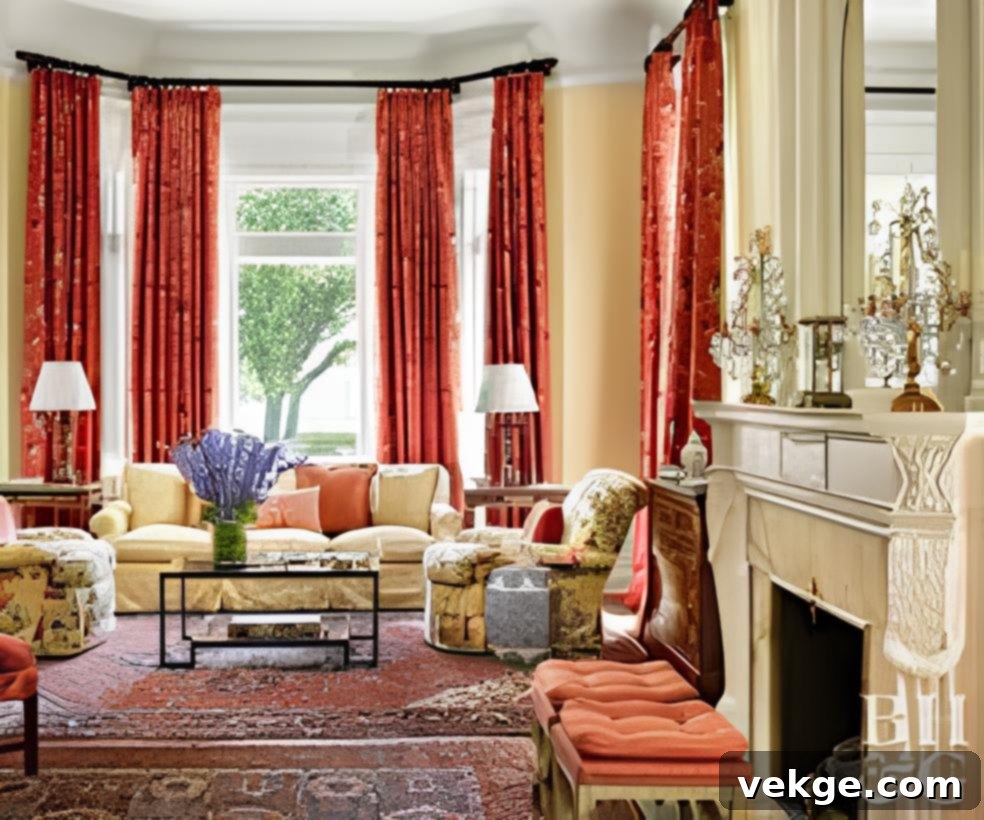Unveiling the Timeless Charm: Essential Elements of a Traditional Living Room Set
The living room stands as the undisputed heart and soul of any home, a vibrant stage where family life unfolds, memories are created, and comfort takes center stage. It’s more than just a room; it’s a reflection of a family’s values, history, and style. Among the myriad design philosophies, the traditional living room holds a special place, distinguished by its enduring appeal, profound comfort, and a rich tapestry of meticulously chosen elements that converge to create a truly inviting and elegant space.
Unlike transient trends, traditional design embraces a sense of permanence and heritage. It prioritizes comfort, functionality, and aesthetic richness, making it a beloved choice for those who seek to imbue their homes with warmth and character. From the stately presence of classic sofas to the intricate details of wall adornments and cherished family photographs, a traditional living room tells a story, offering both supreme functionality and a treasury of treasured artifacts.
Are you eager to delve deeper into the captivating world of traditional living room design? Curious about the specific components that define this beloved style? Let’s explore the fundamental elements that constitute a truly authentic and comfortable traditional living room set.
16 Defining Elements of a Traditional Living Room Set
Creating a truly traditional living room involves a careful curation of distinct elements that work in harmony to achieve a cohesive and timeless aesthetic. Below is a detailed list of 16 essential components, ranging from foundational furniture pieces to decorative accents that bring the space to life.
1. Conventional Wooden Furniture
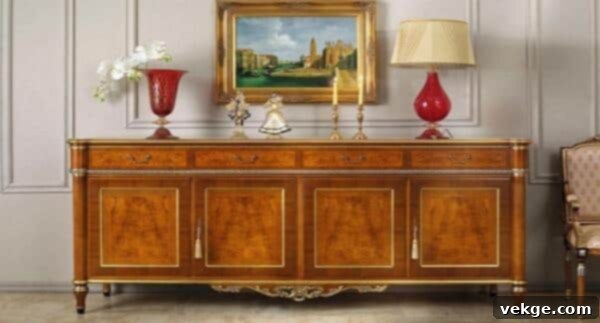
Solid, well-crafted wooden furniture is a cornerstone of any traditional living room set. Pieces like cherry wood chairs with their intricate carvings, robust coffee tables often featuring detailed inlays or turned legs, and matching footstools are emblematic of this style. These aren’t just functional items; they are often heirloom-quality pieces that convey a sense of history and permanence. The choice of wood, typically rich, dark tones such as mahogany, cherry, or oak, adds to the room’s gravitas and classic appeal. Complementing this furniture, hardwood flooring, often covered partially by elegant rugs, provides a durable and beautiful foundation, enhancing the overall traditional aesthetic.
2. Traditional Sofas
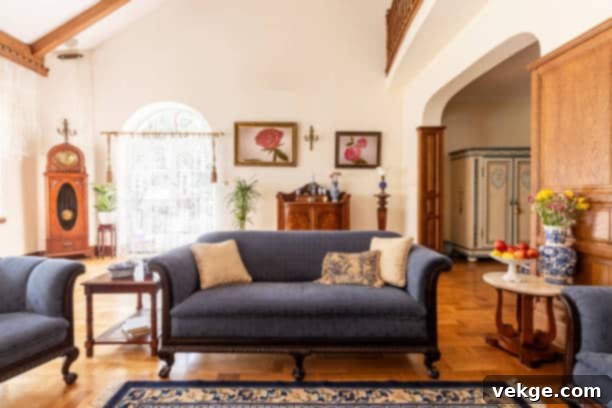
The sofa is the undisputed centerpiece of the traditional living room. Classic designs like the Chesterfield, with its deep button tufting and rolled arms, or a camelback sofa known for its gracefully curved back, are popular choices. Sofas featuring cabriole legs, a design inspired by animal legs, further add to the elegant, classical feel. These foundational pieces are designed not just for comfort but to accommodate multiple people, fostering a warm and welcoming atmosphere. Upholstery often features rich fabrics such as velvet, damask, or brocade, sometimes with bold prints that add character. These sofas pair beautifully with simple yet elegant coffee tables, or even marble-top consoles, providing a harmonious and sophisticated look.
3. Maximalist Aesthetics
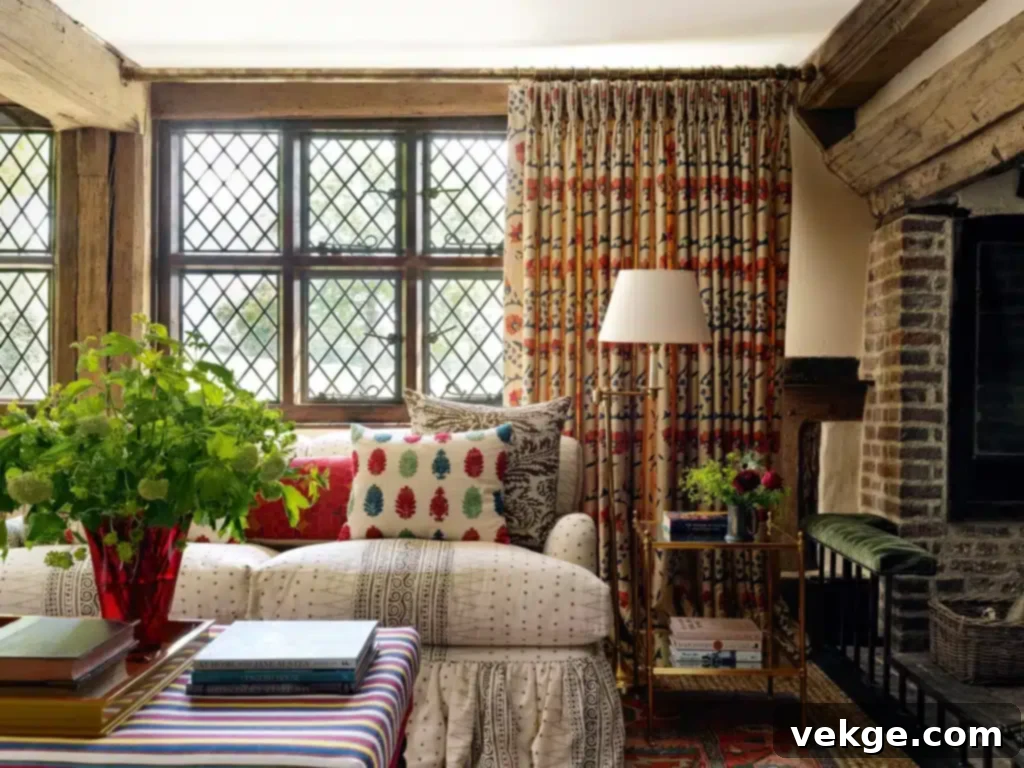
Contrary to minimalist trends, traditional living rooms often embrace a maximalist approach to decor. This doesn’t mean clutter, but rather a rich layering of elements that bring depth and character to the space. From an abundance of framed portraits and ornate mirrors adorning the walls to plush rugs and carpets covering the floor, every component is carefully selected to contribute to a visually rich environment. For instance, a single corner might feature a fully upholstered armchair laden with oversized cushions, a luxurious throw, and a matching footstool, creating a cozy and visually engaging vignette. This layering of textures, patterns, and objects creates a sense of history, personality, and warmth that is deeply inviting.
4. Non-Modular Settings
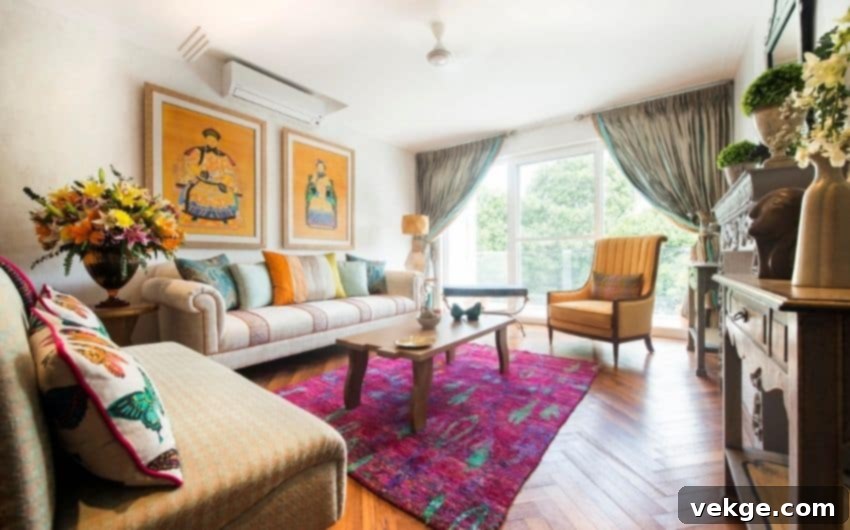
Unlike many contemporary spaces that favor flexible, modular furniture, traditional living rooms are characterized by their non-modular arrangements. Each piece of furniture typically stands as an individual entity, carefully chosen for its design and craftsmanship. These pieces are often coordinated or complementary rather than identical, creating a structured yet diverse look. A classic three-seater sofa might be paired with two distinct armchairs, perhaps a wingback and a slipper chair, all contributing to a cohesive whole. This deliberate arrangement of individual pieces lends a more formal and enduring elegance, emphasizing the timeless nature of the design and the quality of each item.
5. Overstuffed Cushions
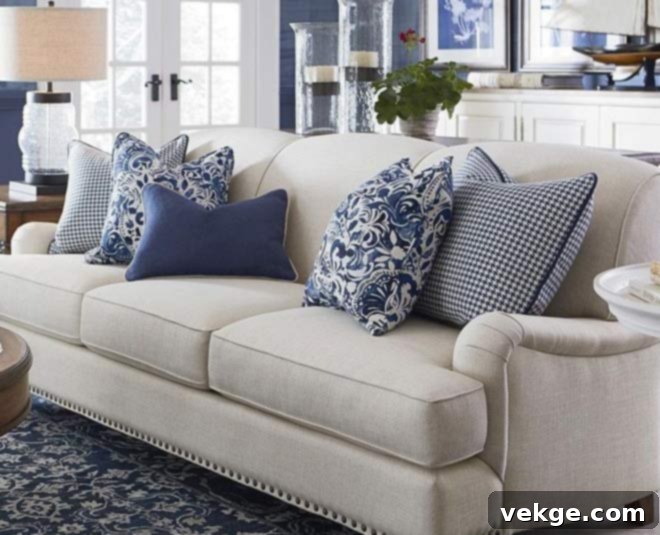
Comfort is paramount in a traditional living room, and overstuffed cushions are a key component in achieving this. Plump, generously filled cushions on sofas and armchairs create an irresistible invitation to relax and lounge for hours. These cushions are often upholstered in luxurious fabrics and can feature varied prints and patterns, all carefully chosen to complement the room’s overall color scheme. The layering of multiple cushions, sometimes with different textures or sizes, adds to the feeling of warmth, indulgence, and lived-in comfort, making the space feel incredibly cozy and welcoming.
6. Extravagant Wallcoverings
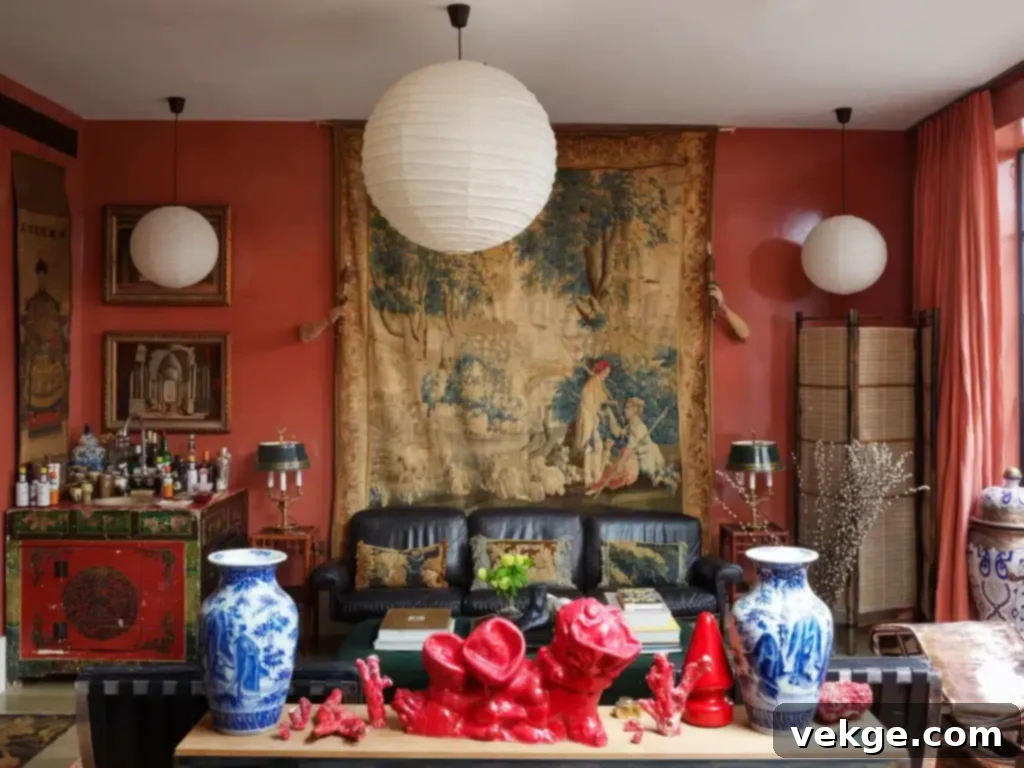
The walls of a traditional living room are often treated as canvases for art and intricate decoration. This includes more than just paintings; elegant wallpapers with damask, floral, or toile patterns are common. Portraits in fancy wooden or gilded frames, large ornate mirrors, delicate embroideries, and classical paintings can all be seen adorning the same space, creating a gallery-like effect. Intricately woven tapestries, either hung directly or framed, add texture and a historical dimension, contributing to the overall opulent and layered aesthetic that defines traditional decor. These wall coverings contribute significantly to the room’s rich character.
7. Sophisticated and Vibrant Prints
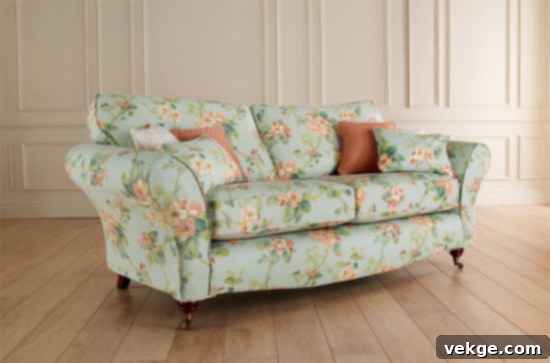
Upholstery and textiles in a traditional living room are renowned for their sophisticated and often vibrant prints. Inspired by nature, classical motifs, or historical patterns, these prints are a dominating feature. You might find delicate floral chintz, bold damasks, elegant toile, or classic stripes and plaids. The beauty lies in the artful combination: while individual pieces of furniture or accessories may feature different prints, the vibrance of their hues and the commonality in their traditional style expertly tie them together. This creates a visually dynamic space that feels both rich and harmonious, avoiding monotony while embracing a full-bodied aesthetic.
8. Floor Covering
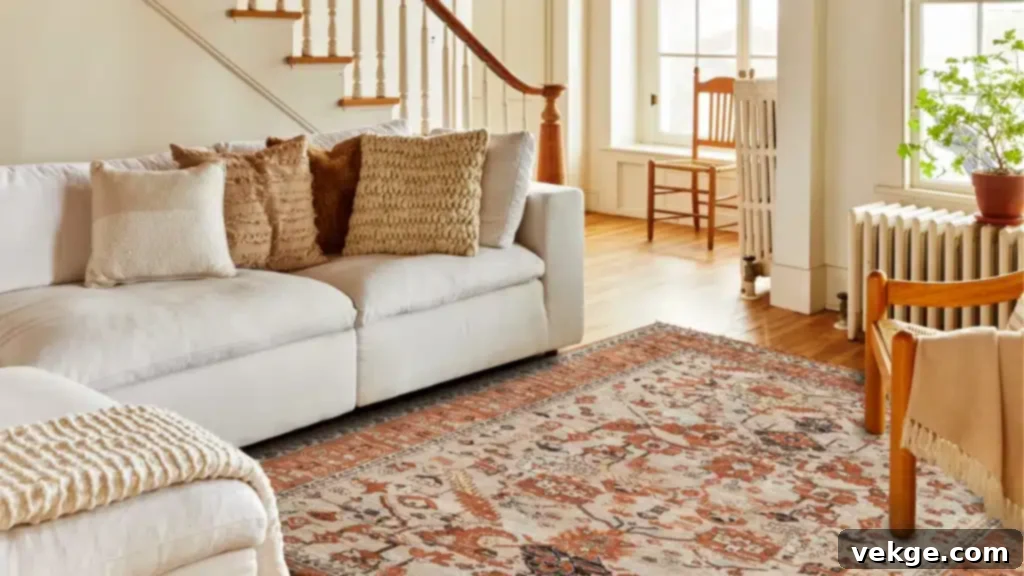
The floor in a traditional living room is rarely left bare. Wall-to-wall carpeting, often in floral prints, classic patterns, or sophisticated pastel colors, is a common feature, providing warmth and a unified foundation. Alternatively, exquisite Oriental, Persian, or Aubusson rugs are strategically placed over hardwood floors. These luxurious rugs, often crafted from wool or silk, boast intricate traditional designs, medallions, and rich color palettes. They not only add a touch of opulence and softness underfoot but also serve as significant decorative elements that define zones and anchor furniture groupings within the larger living space.
9. Statement Portraits
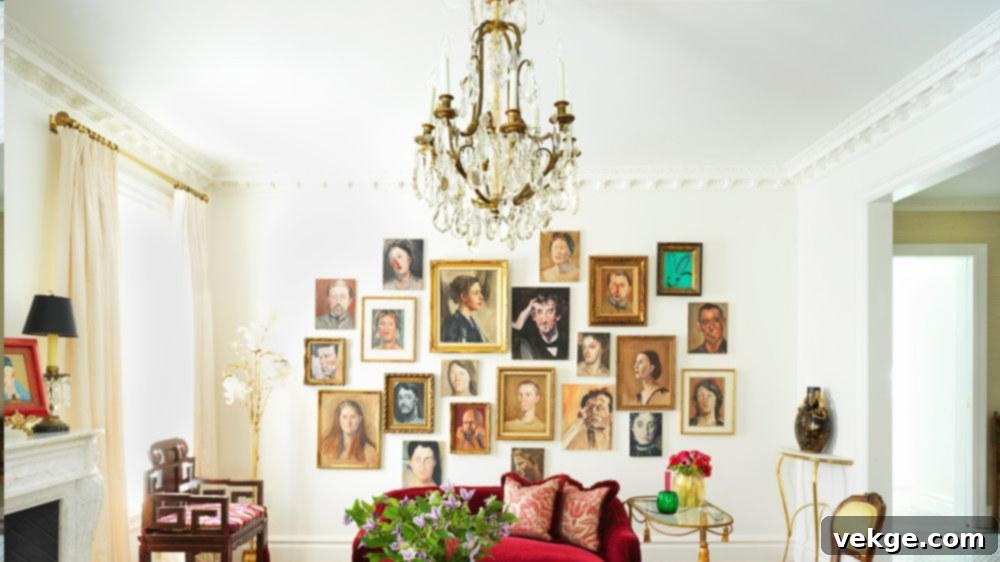
Art plays a pivotal role in a traditional living room, and statement portraits are a prominent feature. Still-life oil paintings, landscapes, and portraits of important figures or ancestors grace the walls, often framed in elaborate, gilded frames that enhance their classical appeal. These artworks do more than just decorate; they convey a rich sense of heritage, culture, and personal history. Alongside these, intricately woven tapestries and other classic artwork pieces contribute to the overall opulence and scholarly feel of the space, acting as focal points that draw the eye and spark conversation.
10. Wall Trimming and Wainscoting
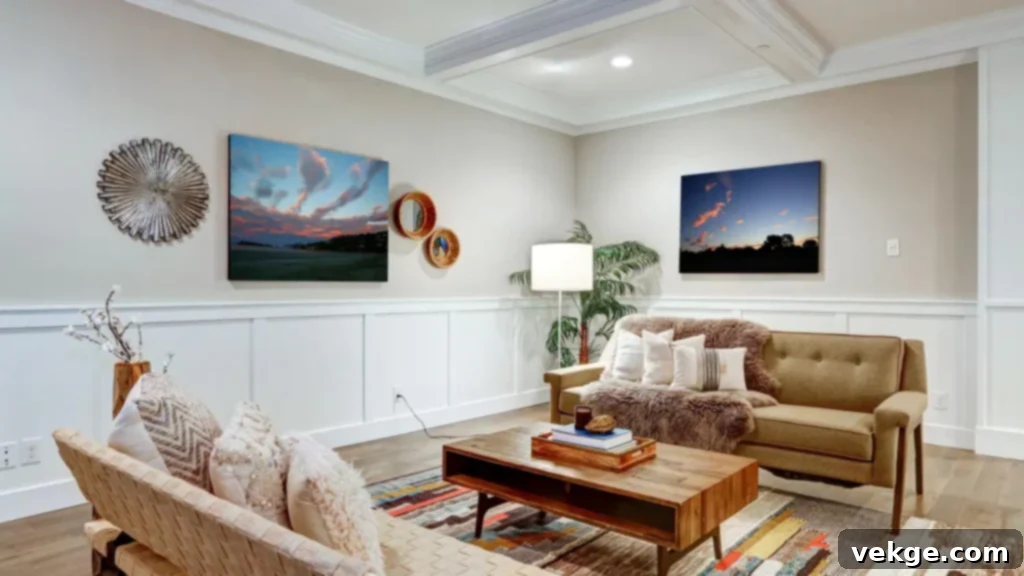
Architectural details significantly contribute to the character of a traditional living room. Intricate wall trimming, such as crown molding, chair rails, and substantial baseboards, adds a layer of sophistication. Wainscoting, the decorative paneling that covers the lower portion of a wall, is another hallmark. These elements, often painted in a contrasting or complementary color to the upper wall, create visual interest and structure without the need for additional adornment. They embody the principle that subtle, well-executed details can speak volumes, providing a refined backdrop that enhances and supports other decorative elements in the room.
11. Bold Hues
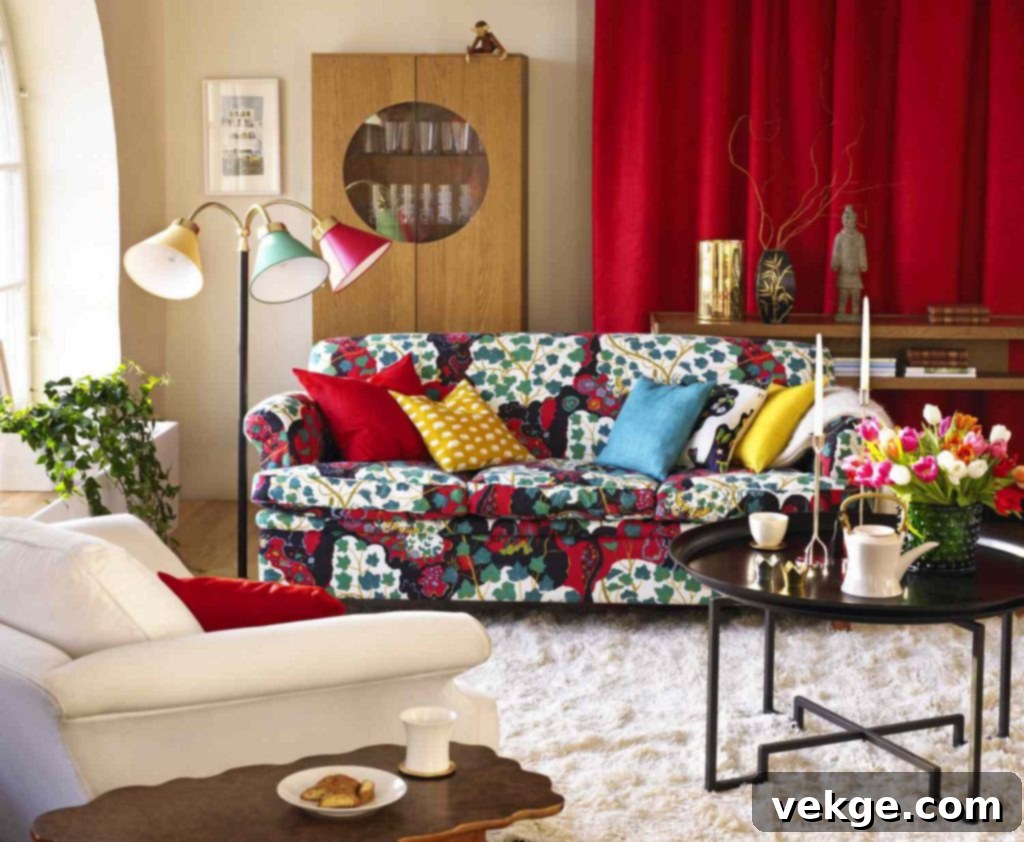
Far from being muted, traditional living rooms often embrace a palette of bold and rich hues. Deep reds, emerald greens, navy blues, and regal purples are frequently used on walls, upholstery, and decorative accents. These vibrant colors are complemented by intricately printed fabrics and embroidered textiles, such as luxurious tablecloths or throws. The strategic use of these strong colors adds a touch of drama, sophistication, and undeniable warmth, transforming the space into an inviting and opulent sanctuary. When balanced correctly with classic patterns and textures, these bold hues create a harmonious and captivating visual experience.
12. Heavy Curtains and Blinds

Windows in a traditional living room are dressed with elegance and grandeur. Heavy, luxurious curtains and blinds are a signature element, often crafted from rich fabrics like silk, velvet, damask, or brocade. These aren’t just for privacy; they add texture, color, and a sense of opulence to the room. Elaborate drapes may include swags, jabots, and decorative valances that perfectly match or complement the room’s upholstery, creating a cohesive and polished look. The weight and richness of these window treatments contribute significantly to the room’s insulated, cozy feel and its overall stately presence.
13. Contrasting Elements
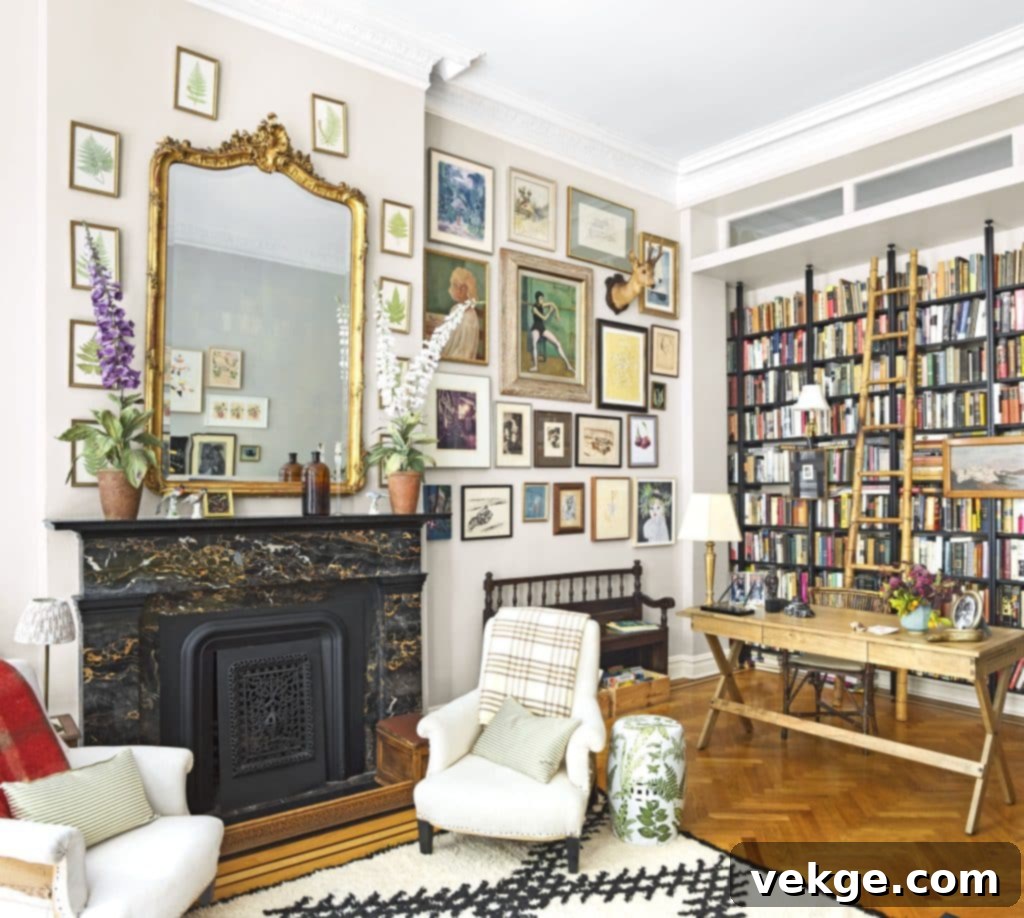
One of the captivating aspects of a traditional living room is its masterful use of contrasting elements. Rather than a monotonous scheme, you’ll often find a rich interplay of varied textures, colors, and prints placed side-by-side. For example, a luxurious traditional sofa set upholstered in a bold floral print might be juxtaposed with classic Chip-n-Dale style chairs featuring a sophisticated striped fabric. This deliberate contrast adds visual interest, depth, and a dynamic energy to the room, preventing it from feeling stagnant. The key is to ensure that while elements contrast, they still share a common thread of quality, style, or color temperature, maintaining overall harmony.
14. Open Fireplaces
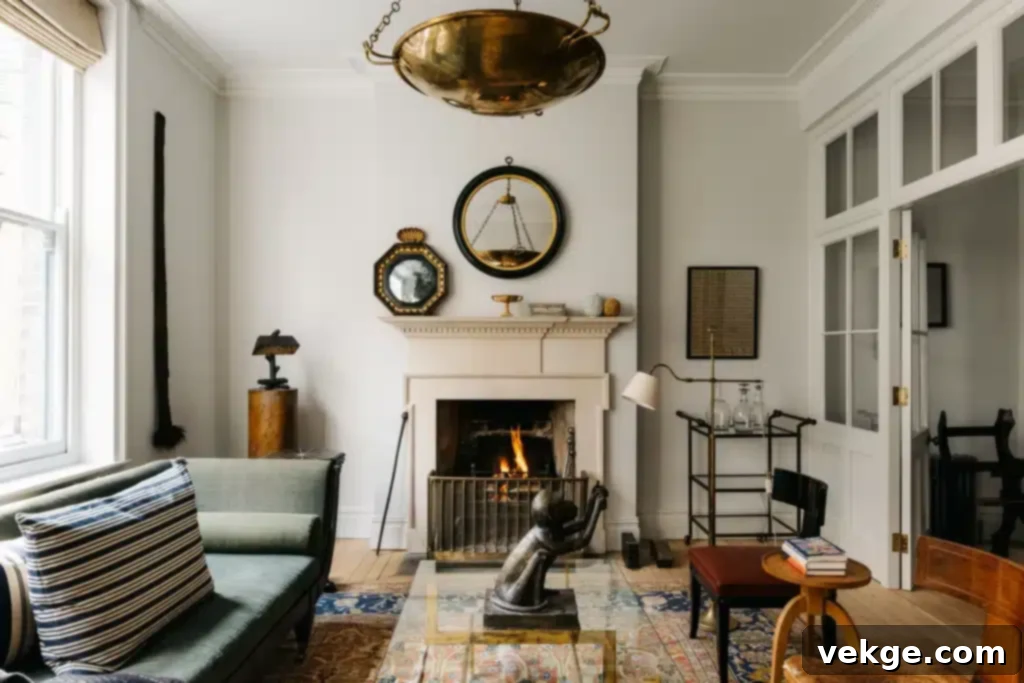
An open fireplace often serves as a central focal point, lending a charming and inviting vibe to traditional living rooms. These fireplaces are not merely functional but are often architectural statements themselves, adorned with intricate marblework, carved wood mantels, or decorative tile surrounds. The warmth emanating from a crackling fire instantly creates a cozy and welcoming atmosphere, perfect for family gatherings or quiet evenings. The mantelpiece above the fireplace is typically decorated with classic items such as clocks, candelabras, vases, or framed art, further enhancing its role as a decorative anchor in the room.
15. Lighting Fixtures
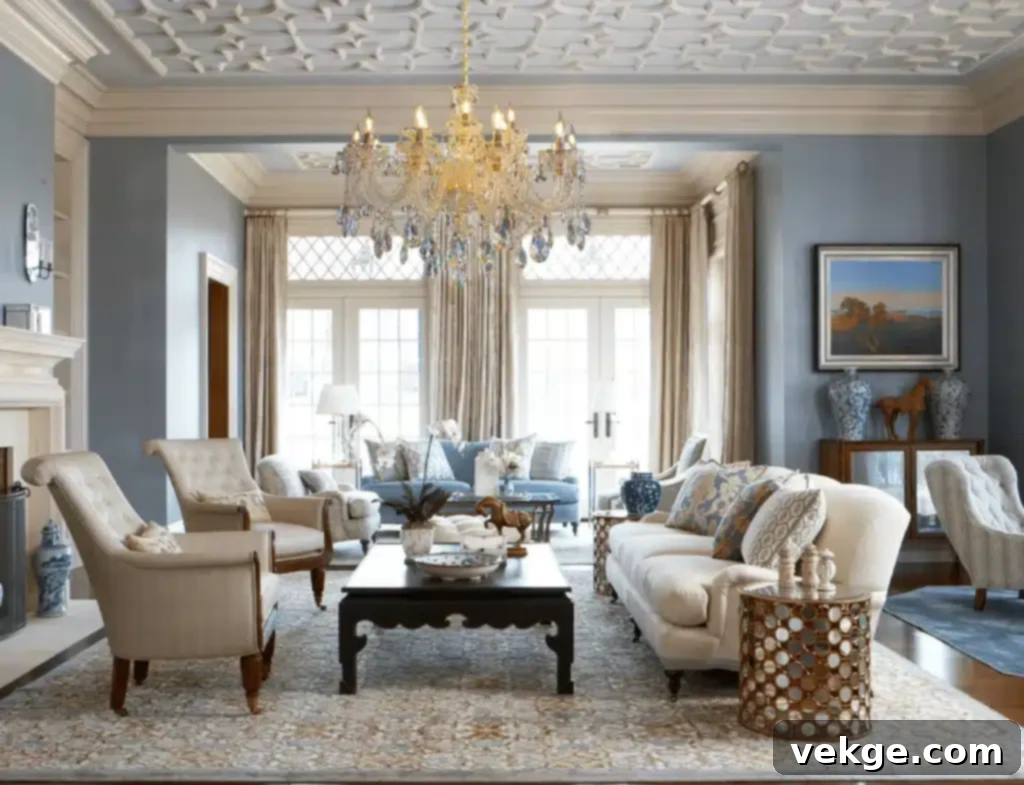
Layered lighting is essential for creating the desired ambiance in a traditional living room. This typically involves a combination of chandeliers, sconces, floor lamps, and table lamps, all selected for their classic designs and often featuring warm white light. Crystal chandeliers, ornate brass or bronze sconces, and lamps with fabric shades on decorative bases contribute to an overall elegant and inviting atmosphere. Opting for finishes like aged bronze, polished brass, or dark wood on lighting fixtures helps to reinforce the old-world charm and complement the room’s traditional aesthetic, providing both functional illumination and decorative appeal.
16. Functional Book Racks and Bookshelves
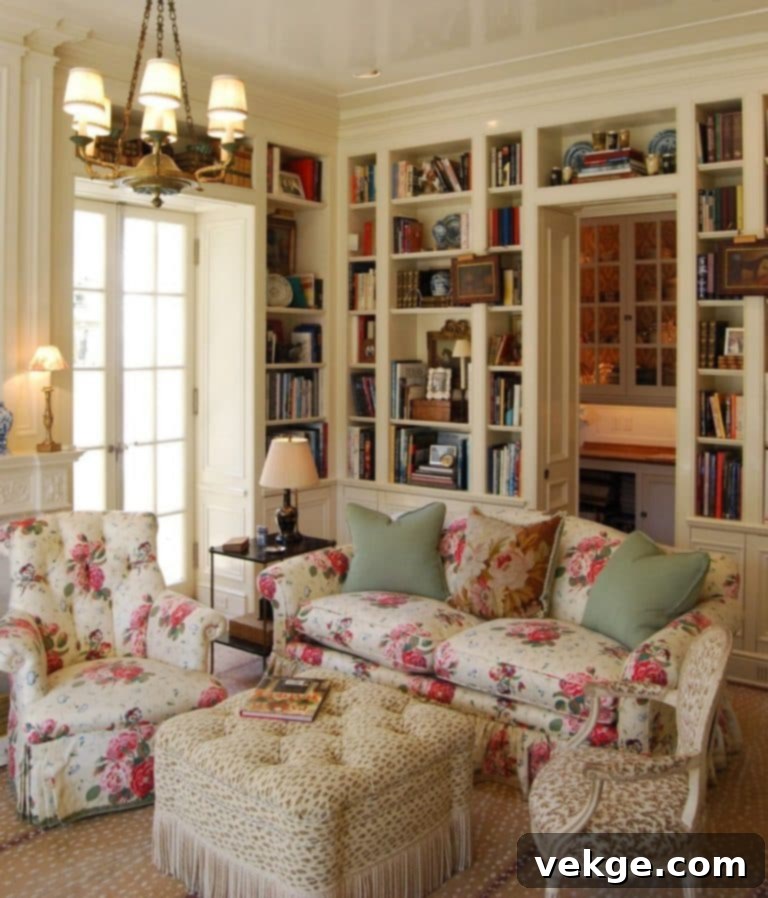
Bookshelves and book racks, while sometimes understated, are vital elements in many traditional living rooms, adding an intellectual and personal dimension to the decor. Built-in bookshelves that frame a fireplace or span an entire wall are particularly common, offering ample space for a personal library. Barrister bookcases or elegant display cabinets not only store beloved books but also serve as showcases for family treasures, ornamental pieces, and travel souvenirs. This furniture piece speaks to a sense of intellectual curiosity and history, further enriching the room’s character and making it a truly personal and engaging space.
Conclusion
The traditional living room set is a testament to enduring style, offering a harmonious blend of comfort, functionality, and aesthetic beauty that caters to everyone’s needs. It’s a space where every element, from the grandest sofa to the smallest decorative accent, contributes to an overarching atmosphere of warmth, sophistication, and timeless elegance. By thoughtfully incorporating these core components, a living room transcends its basic purpose to become a welcoming sanctuary, rich in character and personal charm.
Bold colors, standout decorations, delightful patterns like stripes and flowery designs, and bookshelves brimming with beloved books infuse a room with vibrant energy and a sense of inviting depth. Large, fabric-covered couches, small, upholstered footstools, and classic chairs arranged around elegant tables work in concert to make the room feel complete and cohesive. The key to achieving this harmonious balance lies in selecting colors and textures that complement each other, ensuring that every detail contributes to a unified and appealing whole.
Embracing the traditional style means investing in quality, history, and a design philosophy that never goes out of fashion. It’s about creating a space that feels deeply personal, incredibly comfortable, and eternally welcoming. We would love to hear your thoughts and experiences with traditional design. Share your views with us and tell us how you bring timeless elegance into your home!
